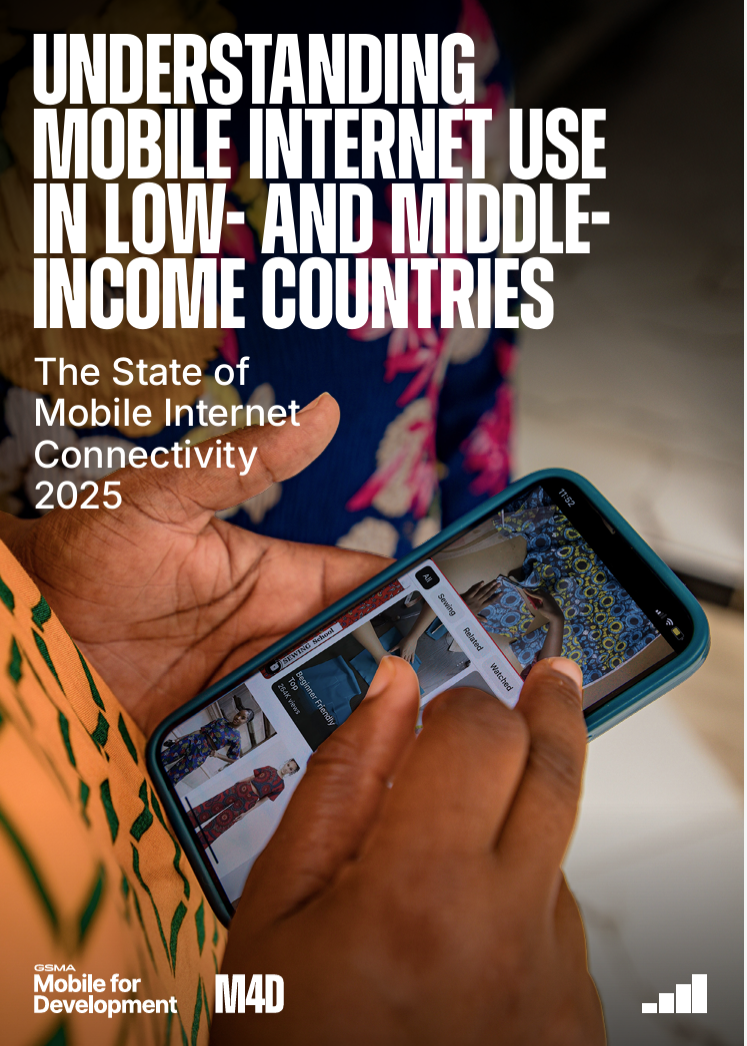The State of Mobile Internet Connectivity 2025: Understanding Mobile Internet Use in Low- and Middle-Income Countries

Please complete the form below or register for a free public account to access this report.
Report details
The State of Mobile Internet Connectivity 2025: Understanding Mobile Internet Use in Low- and Middle-Income Countries
The State of Mobile Internet Connectivity 2025 series draws on a range of data to analyse key trends since 2015. It considers the importance of not just mobile broadband coverage but ‘meaningful connectivity’ – users having a safe, satisfying, enriching and productive online experience that is affordable in their context. Achieving meaningful connectivity requires an understanding of both the barriers and enablers, including the fundamental enablers of affordability, knowledge and skills, safety and security, and relevant content and services.
This fourth report in the series goes beyond mobile internet adoption to examine how people actually use mobile internet. It looks at frequency of use, the range of online activities they engage in, and the differences in use across countries and demographics.
The findings of this report series are based on the GSMA Consumer Survey, the GSMA Mobile Connectivity Index and a range of other industry reports.
Download the Report
Complete the form below to get instant access to this report. For easier access in the future, you can register for a free account here.
Report details
The State of Mobile Internet Connectivity 2025: Understanding Mobile Internet Use in Low- and Middle-Income Countries
Related research
The State of Mobile Internet Connectivity 2025: Network Coverage and Infrastructure
This third report in the series examines how network coverage and infrastructure are expanding, and investigates network quality. These factors affect people’s ability to access the internet and their experience when doing so.
The State of Mobile Internet Connectivity 2025: Trends in Mobile Internet Connectivity
This second report in the series explores how mobile internet adoption has evolved since 2015. It examines three areas: the share of the population using mobile internet, the proportion still living outside mobile broadband coverage (the coverage gap), and those who live within mobile broadband coverage but are not yet online (the usage gap).
The State of Mobile Internet Connectivity 2025: Overview Report
The State of Mobile Internet Connectivity 2025 considers the importance of not just mobile broadband coverage but ‘meaningful connectivity’ – users having a safe, satisfying, enriching and productive online experience that is affordable in their context. This is the first in the series and summarises the key findings from the other five publications.
Authors
How to access this report
Annual subscription: Subscribe to our research modules for comprehensive access to more than 200 reports per year.
Enquire about subscriptionContact our research team
Get in touch with us to find out more about our research topics and analysis.
Contact our research teamMedia
To cite our research, please see our citation policy in our Terms of Use, or contact our Media team for more information.
Learn moreRelated research
The State of Mobile Internet Connectivity 2025: Network Coverage and Infrastructure
This third report in the series examines how network coverage and infrastructure are expanding, and investigates network quality. These factors affect people’s ability to access the internet and their experience when doing so.
The State of Mobile Internet Connectivity 2025: Trends in Mobile Internet Connectivity
This second report in the series explores how mobile internet adoption has evolved since 2015. It examines three areas: the share of the population using mobile internet, the proportion still living outside mobile broadband coverage (the coverage gap), and those who live within mobile broadband coverage but are not yet online (the usage gap).
The State of Mobile Internet Connectivity 2025: Overview Report
The State of Mobile Internet Connectivity 2025 considers the importance of not just mobile broadband coverage but ‘meaningful connectivity’ – users having a safe, satisfying, enriching and productive online experience that is affordable in their context. This is the first in the series and summarises the key findings from the other five publications.
- 200 reports a year
- 50 million data points
- Over 350 metrics
